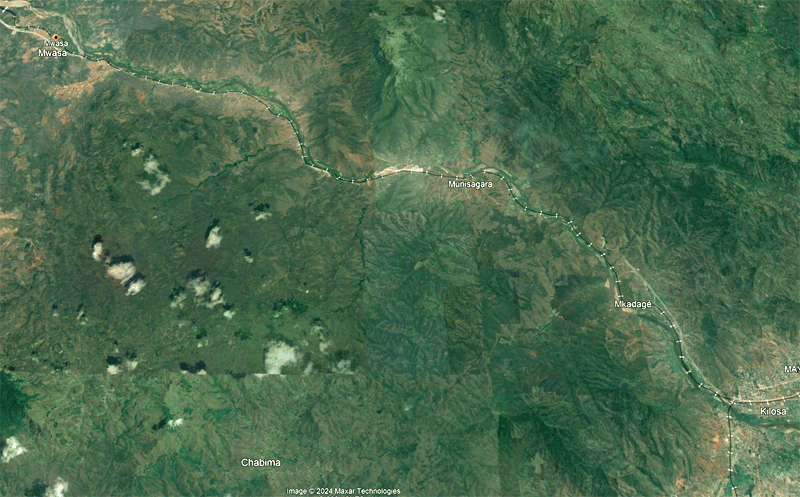
In the 1980s, during the vegetable and citrus and mango nursery project based at the University of Agriculture from Morogoro we had two trainees from the village of Mwasa. One of them disappeared later but I remained for a long time in contact with one of them, called Matata. We had installed a citronnier nursery there, plants that was grafted in orange trees. Matata always has his orange trees in a field, near the Mkondoa River. The other orange trees in the village had been planted on the bank, in height, and afterwards I could see the feet disappear one after the other, carried away with the sandy shore.
The Mkondoa river is indeed subject to very strong floods, taking its source in the Usagara Mountains much higher in altitude. It is reduced to a thin stream of water that one crosses by barely wetting ankles in dry season. In rainy season we can have water up to the waist. Its width varies from five meters to forty meters in average years.
In the 1980s it was not possible to travel from Kilosa to Mwasa by car. I had to leave the car, a 4WD, at Kilosa and to take the train to Mwasa. The train, as now still, has no very stable schedule and I had therefore obtained a permit to travel on goods trains. In the cars half full of bags of all kinds, sometimes with other passengers who paid for their trip directly to the mechanic. It happened to me be able to sit on the locomotive, sitting on the wing, watching the landscape at thirty kilometres per hour. The train could not stop at Mwasa, the mechanics explained to me, I had to take advantage of the coast that slowing down of the motion while climbing the coast preceding Mwasa to jump from the train.
At that time Maguru was a hamlet of Mwasa. But the district has developed into a village with its elected mayor, its municipal council, its municipal police officer and its school. The village of Mwasa was known for its laziness and the little will of its inhabitants to develop. But there has been an influx of people from other regions, such as Wagogo traditionally inhabiting Dodoma, which has energized the place, according to the explanations I got. The project was therefore very welcomed as we will see.
The village being located at 550 meters altitude, only the mango and avocado trees can be successfully planted.

The map is from Gogol Earth. The satellite image shows the Mkondoa valley where lies the railway, as well as the city of Kilosa, in the lower right, the villages of Mkadege and Munisagara, and in the North-West that of Mwasa. Maguru is located at the end of the village, upstream. The village of Mzaganza, not indicated, is halfway between Munisagara and Mwasa. Chabima is indicated at the bottom of the map.
This map cannot be used as evidence in case of conflict of territory.
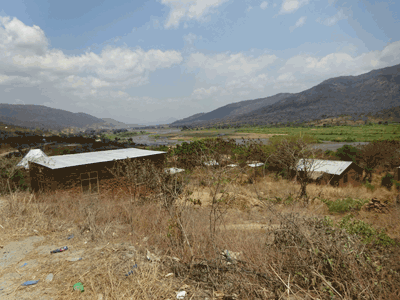
The valley seen from Mzaganza, with in the background the
village of Mwasa. On the left bank appear the fields of onions. We see
the bed of the river, low at this time. The old railway is on the right
bank, as well as the road.
I had made contact with the village leaders (or mayors), Maguru’s had suggested me to come at any time of the day which suits me. Mwasa’s leader found the project interesting and assured to talk to his secretary, they were going to contact me again the next day. I didn’t actually hear from them, so I went to Maguru Thursday afternoon. It takes an hour to reach the village, at thirty kilometers from Kilosa approximately.
My friend Sudi and I met the village chief, Madanganyo. Cheerful, interested, he promised to contact the members of villae council for the next morning. The evening was spent visiting the village, walking to the school, watching men making bricks. People gathered at Sudi’s house in the evening to watch the football game on TV, and we were about thirty in the room after ten minutes.
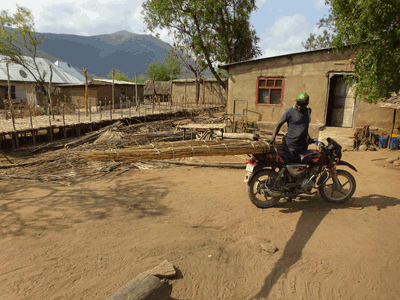
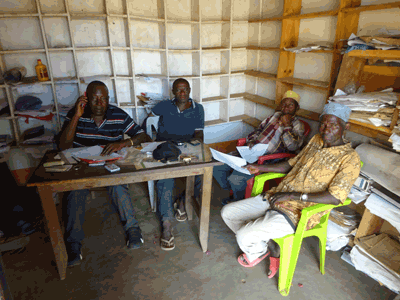
Sudi in front of his house, bringing canes for his drying store
to onions. On the left is the security officer, with the head of
village. Two councillors on the right
As the chief of Mwasa had not contacted me again I did not not deemed useful to do so. I was not going to beg for this project as I felt doing in Chabima. So we went in the morning at the village office, where a meeting with people was already being held about what appeared to be a swindle. I was invited to sit but the pleadings were getting longer, I slipped away - Sudi had already done, pretexting business elsewhere. Back home I have explained to Sudi the project, I detailed the documents that I had brought as the tree list and the receipt system. He then called a nephew to whom I explained everything again and talked about leaving. It is at that time that we were picked up to go to the village office, leaders were waiting for us.
There was the head of security, the head of village, and four councillors. They listened to me, knowing me already all since I had worked in the village before, or had heard talk about me. So I was quick in the introduction and explained the documents.
As I wrote the village had welcomed newcomers all enthusiastic about having fruit trees. Some even added in a low voice, in substance, that at this price the trees were given, that they were really lucky. I cannot help myself comparing with the village of Chabima where the authorities, on the contrary, they tried to stop the project and prevent me from settling down in the village. Both sides talked about disclosing the project, even as far as Kidete, seven kilometres north-west. Kidete is a railway station, and by road you can reach Mpwapwa and Gairo, which is located on the tarmac road that leads to Dodoma.
In brief a motivating meeting, village authorities concerned by the development of the area, and the certainty of being able to count on a few people who will centralize orders.
This valley is known for producing big quantities of onions. This is actually their main cash crop, while Chabima village relies on beans. Onions are grown in irrigated farming, water from Mkondoa by gravity or through pumps. At this time onions are being harvested, the farmers who have planted early and are already selling their crops. The onions must be dried in dryers before bagging.
Kinds of reed, called matete, which are used. These reeds are fairly firm and have thorns that make their use difficult. A plot infested with these reeds quickly become difficult to grow. They grow in large quantities on the banks.
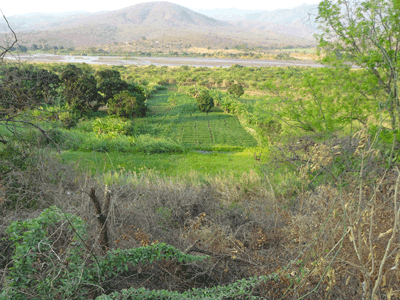
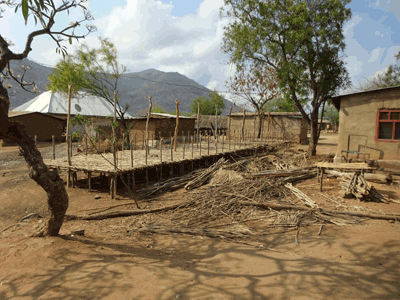
A plot of
onions.
Right the construction of a dryer.
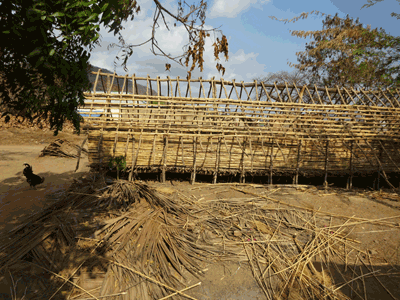
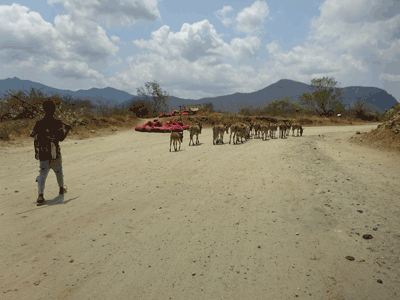
Canes are used for the whole construction, except support posts
and ridge.
In the background, in red, bags of onion
waiting a truck.
Donkeys are frequently used in small paths.
The bridge is now finished, it only remains to let it dry and remove the concrete supports.
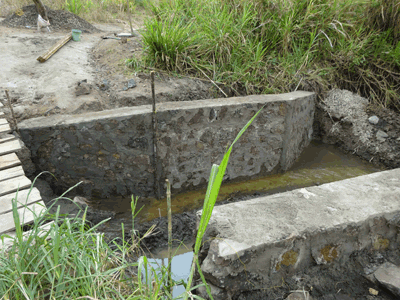
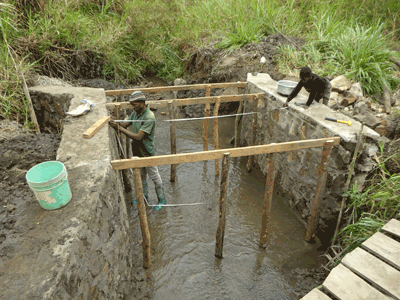
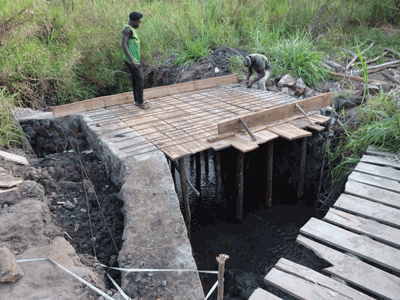

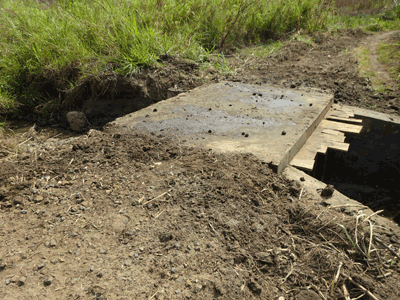
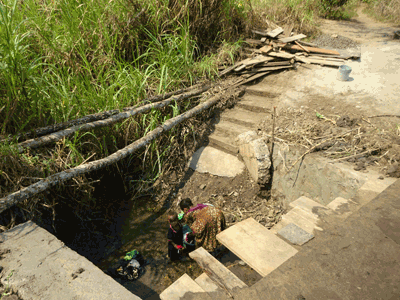
The bridge dries up, it must be watered morning and evening so that the concrete dpes not crack. The staircase to the river has been cleaned.
The drift is being destroyed, we have considered a bridge with two arches in the place.
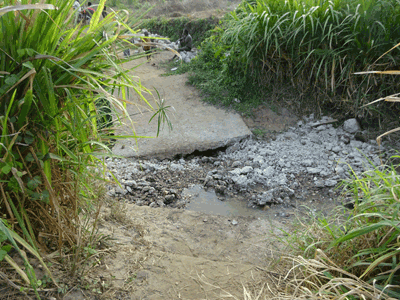
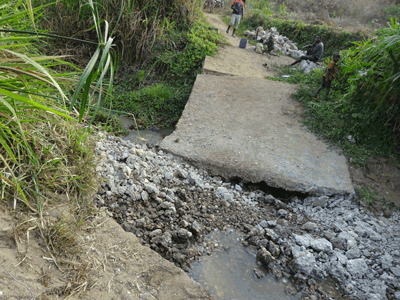
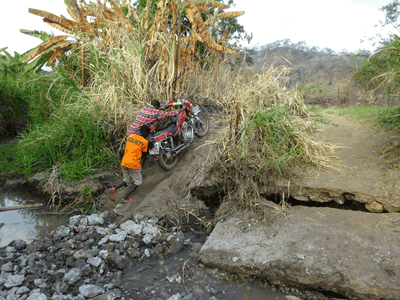
There are now two railway lines, the old line and the new power line. The latter is protected by wire mesh.
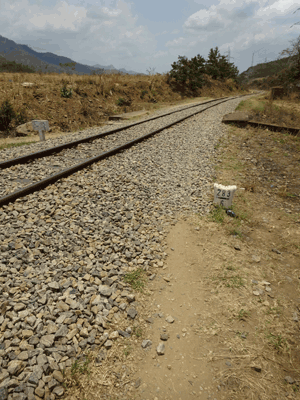
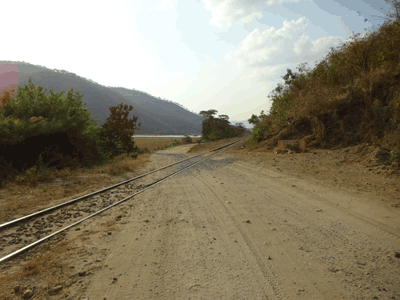
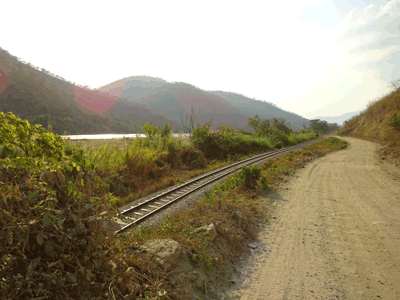
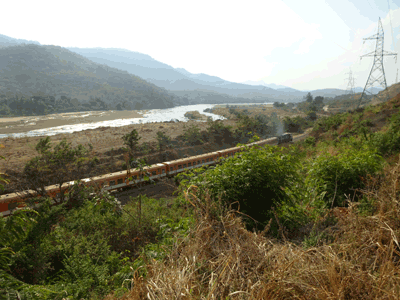
It used to be necessary to drive a motorcycle on either side of the
rail track and along the rails. The passages required
often to get off the bike and push it. The road is now running along
the railway with crossings here and there. The floods of the Mkondoa
had in fact severely damaged the line a few years ago,
which has led to the consideration of a new line, located higher on the
hills.
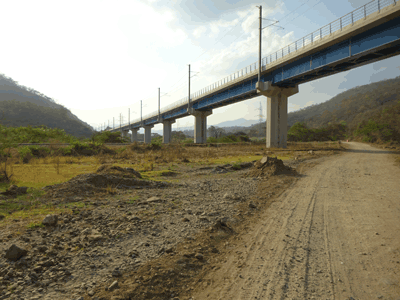
The new railway has many bridges and tunnels.